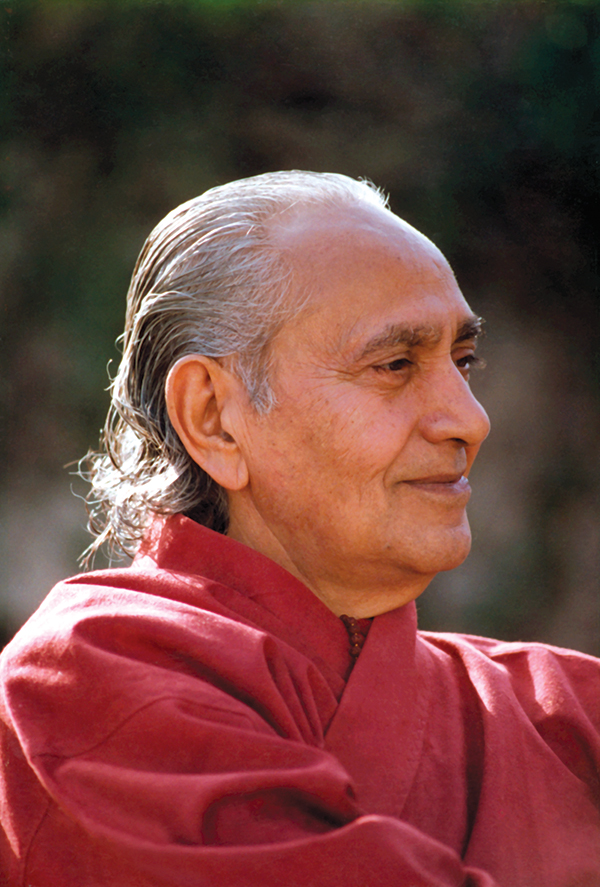
Almost everyone has felt the influences of stress at some point during life, perhaps relating to a situation at school, work or in one’s family. Although the stresses in our environment cannot be controlled, our reaction to them can be. Breath can be used as a very powerful tool in the regulation of both the mind and body, and thus also in the reduction of stress. Most people, however, have never observed their own process of breathing; its qualities and patterns have remained unknown, hidden in the unconscious mind. Although the breath is maintained by unconscious mechanisms in the body, it can be brought under our conscious control, and unhealthy breathing habits can be corrected. In doing this, one can decrease the level of stress in one’s life and feel more balanced and relaxed.
Despite the obvious importance of the breath, a majority of us have poor breathing patterns, which disturb us physically, mentally and emotionally. These improper breathing habits thus create stress and can eventually lead to other imbalances and complications. The importance of good breathing is paramount, for it continually provides us with nourishment and cleanses our body; the oxygen inhaled is utilized by every cell of our body. When this gas exchange does not take place efficiently, the entire pulmonary-cardiovascular system must work harder in order to properly oxygenate the blood.
By paying attention to one’s breath, one can become aware of its irregularities and dysfunctions. Observe your own breathing for a moment and you may notice pauses and jerks that interrupt its flow. The breath should be allowed to flow smoothly. Pauses and jerks arise from poor breathing habits and disturb the nervous system. These irregularities in the breath can be corrected with consistent, daily practice of smooth, even breathing, which in turn will give rise to greater control over the respiratory motion and lead to a state of mental and physical calmness and alertness.
The most fundamental requirement for proper breathing is to breathe diaphragmatically. It is easiest to observe this process and to practice breathing diaphragmatically, when in a comfortably seated position or lying with the back against the floor. Place one hand on the upper region of the chest and the other hand on the soft part of the abdomen just below the rib cage. With each inhalation one should feel the abdomen gently rise and with each exhalation the abdomen should gently fall. One should be careful not to force the breathing or to push the abdomen in and out with the abdominal muscles. As the air enters and exists the lungs, the abdomen will slowly rise and fall on its own accord. It is important that the chest region be still so that one is not breathing with the chest. Accurate diaphragmatic breathing is established by allowing the breath to reach the depths of the lower lungs rather than to circulate only in the upper regions of the lungs.
After ensuring that one is breathing with the diaphragm rather than the chest, one should allow the breath to be smooth and even, so that inhalation and exhalation are of equal length. The mouth is kept gently closed so that one breathes through the nose. Eliminate any noise and jerks in the breath as well as any pauses occurring after inhalation or exhalation. Each breath should be full and relaxed, rather than shallow. The coordination and integration of these important qualities into one’s breathing pattern will occur with a little consistent effort. Although long term changes will occur more gradually, the benefits of practicing these techniques for 5-10 minutes daily will be noticed immediately.
Diaphragmatic breathing leads to autonomic balance and a more relaxed state of being. After some weeks of practice, more subtle changes will be noticed. The rhythm of the breath will become more relaxed and regular. This steadiness leads to a greater efficiency of the breathing process and reduces the amount of work required for proper ventilation and oxygenation of the blood.
By establishing an even, steady breath, a state of physiological balance is maintained, and the mind remains balanced and tranquil. A significant degree of control over the emotions can be achieved when one learns to regulate the breath. This is no small benefit, for it is often our emotions that lead us to feel increasingly stressed in life, and the regulation of these emotions through healthy breathing will greatly aid us in creating balance and equanimity in the face of life’s difficulties.
Reprinted from The Hindustan Times, Dec 27, 1992
